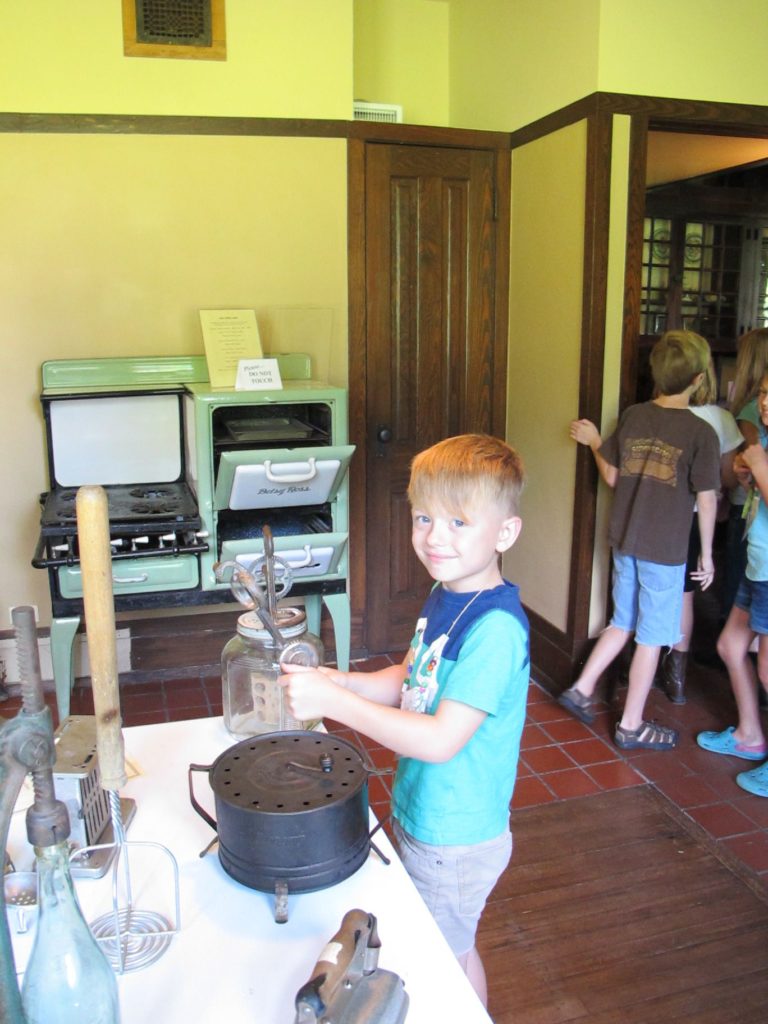The Fabyan Villa Museum is a 1907 Frank Lloyd Wright re-designed home.
REOPENs MAY 2, 2026
Wednesdays, saturdays, and sundays, 11 AM - 3 PM
TICKETS AVAILABLE SOON! SEE CALENDAR BELOW.
Admission
-
Experience an in-depth, one hour long tour, led by a veteran docent. Afterwards, enjoy a stroll through the Fabyan Japanese Garden.
$10 / person
-
Explore the museum on your own with volunteers available to answer your questions.
$5 / adult
$3 / child (ages 5-17)
FREE / child (ages 0-4)
Getting tickets in advance is highly recommended.
The Fabyan Japanese Garden is also open on Wed/Sat/Sun 12-3 PM.
LOCATION
The Fabyan Villa Museum is located on the west side of the Fox River within the Fabyan West Forest Preserve at
1925 S. Batavia Ave. / Route. 31
Geneva, IL 60134
PARKING AND SITE MAP
The Museum is approximately a 1/2 mile walk from the closest available parking. Please click HERE for parking directions and an enlarged version of the Fabyan West Forest Preserve Site Map.
Advance arrangements can be made for drop-off at the site’s entrance for those with mobility difficulties by emailing us at fabyanvilla@ppfv.org or calling 630-377-6424.
-
The Fabyan Villa Museum tells the story of Colonel George and Nelle Fabyan in their 1907 Frank Lloyd Wright re-designed home.
Expect an hour for a docent-led guided tour of the Fabyan Villa Museum. Self-guided tours begin on the 1/2 hour and are at your own pace with most people taking about 30 minutes.
Both the guided and self-guided tours include the 1st and 2nd floors of the Fabyans’ historic home listed on the National Register of Historic Places. On the first floor, visitors are introduced to the Fabyans’ history, Frank Lloyd Wright design, and the Fabyans’ taxidermy and Asian art collections. When reaching the second floor, visitors will enjoy amazing views of the estate out of the wonderfully Wright-designed cathedral-style windows and discover the scientific achievements in codebreaking from William and Elizebeth Smith-Friedman and architectural acoustics funded by the Fabyans’ at their Riverbank Laboratories.
Additional visitor information:
Expect a 1/2 mile walk from parking lot to museum.
The Fabyan Villa Museum is inside the Fabyan West Forest Preserve. The walk from the edge of the parking lot to the museum is approximately 1/2 mile along a paved path that winds up a hill.NO PUBLIC RESTROOMS IN MUSEUM.
There are no public restrooms in the museum. The Fabyan Forest Preserve provides public restrooms near the North Parking Lot (see site map).Want a preview of what you will see on your tour?
See the online Self-Guided Tour!HAVE MORE QUESTIONS?
Visit our Frequently Asked Questions (FAQ) page at PPFV.org/faq-fabyan-villa-museum. -
For answers to the most frequently asked questions about the Fabyan Villa Museum, visit our FAQ page.
-
Fabyan Villa Museum group tours available Thursdays from May-September
$15/person with a minimum group fee $150
1 hour docent-led private tour$20/person with a minimum group fee of $200 to include the Fabyan Japanese Garden
1 and 1/2 hour docent-led private tourA deposit of the minimum fee is required to confirm a date and time for the tour. For additional terms and information about our group tours, please see our Fee Schedule.
For more information and to book a tour for your group please call 630-377-6424 or email fabyanvilla@ppfv.org.
-
Wheelchair accessibility is limited. The walk from the parking lot to the Villa is approximately a 1/2-mile. Advance arrangements can be made for drop-off at the museum’s front door for those with mobility difficulties by emailing us at fabyanvilla@ppfv.org or calling 630-377-6424.
There are six steps with a railing to enter the museum and only stairs to its second floor.
-
The Fabyan Villa was the home of Colonel George and Nelle Fabyan from 1905 to 1939. Riverbank, the name they bestowed upon their property, was initially a country retreat from their home in Chicago where Colonel Fabyan worked in his father’s dry goods and textile company, Bliss Fabyan & Co. The Fabyans hired Frank Lloyd Wright in 1907 to enlarge and re-model the existing farmhouse and shortly thereafter took up permanent residence at the Villa, as they called their home. They acquired 300 acres, creating a country estate that soon became a lavish showplace complete with fountains, gardens, a Roman-style swimming pool, a Dutch-style windmill, a private zoo, a working lighthouse, a boathouse, greenhouses, tennis courts, laboratories and more. The Fabyans pursued varied interests on their estate, including horticulture, animal husbandry, and scientific research.
When visiting the Villa Museum, listed on the National Register of Historic Places, you will discover the Fabyans’ uniquely fascinating legacy. The Frank Lloyd Wright Prairie-style house contains the Fabyans’ private collection of Asian artifacts, natural history specimens, original furniture, and more! Documents and photographs detail the Colonel’s involvement in the 1905 Treaty of Portsmouth and Japanese international relations, the Bacon/Shakespeare controversy, code-breaking that significantly influenced both World Wars, and pioneering research and development in acoustics. The captivating combination of significant architecture, military intrigue, Japanese culture, and personal exploration makes the Fabyan Villa Museum a unique experience for all ages. The Fabyan Villa is featured in Jason Fagone’s book, The Woman Who Smashed Codes about the life and times of Elizebeth Friedman who led code-breaking research at the Riverbank Laboratories during WWI.
-
Frank Lloyd Wright is among the most celebrated American architects in history. Wright began his career under the supervision of Louis Sullivan in 1888. He ventured out on his own in 1893 and built his studio in Oak Park in 1898. Starting in 1900, Wright began to develop his signature “Prairie Style” which featured open floor plans, low-pitched roofs with broad, overhanging eaves, strong horizontal lines, built-in cabinetry and furniture, and a wide use of natural materials – especially stone and wood.
-
Share with visitors the Fabyans’ uniquely fascinating legacy and the stunning architecture of Frank Lloyd Wright’s prairie-style as a volunteer! We train you and appreciate a commitment of at least one three-hour open day a month during our season, May to October. For more information, visit our Volunteer Page.
-
We bring the museum to you!
For a very economical fee, our museum director will provide a 45-minute to an hour presentation on aspects of the uniquely fascinating Fabyans’ legacy. For more information visit www.ppfv.org/traveling-talks.
Questions? Visit our FAQ page.
GALLERY
The Fabyan Villa Museum is operated by Preservation Partners of the Fox Valley through a contractual agreement with the Forest Preserve District of Kane County.












